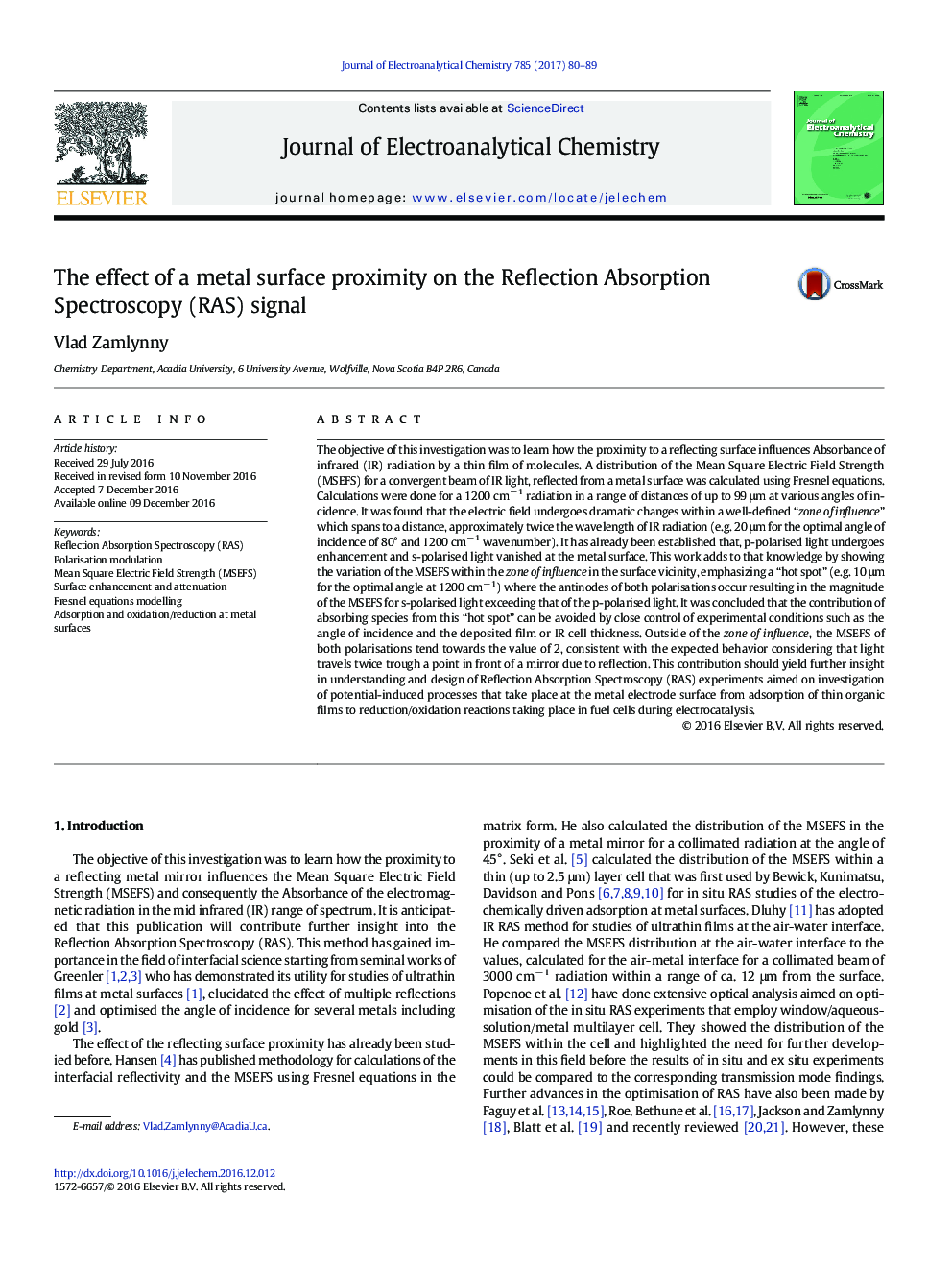| کد مقاله | کد نشریه | سال انتشار | مقاله انگلیسی | نسخه تمام متن |
|---|---|---|---|---|
| 4908076 | 1426590 | 2017 | 10 صفحه PDF | دانلود رایگان |
عنوان انگلیسی مقاله ISI
The effect of a metal surface proximity on the Reflection Absorption Spectroscopy (RAS) signal
دانلود مقاله + سفارش ترجمه
دانلود مقاله ISI انگلیسی
رایگان برای ایرانیان
موضوعات مرتبط
مهندسی و علوم پایه
مهندسی شیمی
مهندسی شیمی (عمومی)
پیش نمایش صفحه اول مقاله

چکیده انگلیسی
The objective of this investigation was to learn how the proximity to a reflecting surface influences Absorbance of infrared (IR) radiation by a thin film of molecules. A distribution of the Mean Square Electric Field Strength (MSEFS) for a convergent beam of IR light, reflected from a metal surface was calculated using Fresnel equations. Calculations were done for a 1200 cmâ 1 radiation in a range of distances of up to 99 μm at various angles of incidence. It was found that the electric field undergoes dramatic changes within a well-defined “zone of influence” which spans to a distance, approximately twice the wavelength of IR radiation (e.g. 20 μm for the optimal angle of incidence of 80° and 1200 cmâ 1 wavenumber). It has already been established that, p-polarised light undergoes enhancement and s-polarised light vanished at the metal surface. This work adds to that knowledge by showing the variation of the MSEFS within the zone of influence in the surface vicinity, emphasizing a “hot spot” (e.g. 10 μm for the optimal angle at 1200 cmâ 1) where the antinodes of both polarisations occur resulting in the magnitude of the MSEFS for s-polarised light exceeding that of the p-polarised light. It was concluded that the contribution of absorbing species from this “hot spot” can be avoided by close control of experimental conditions such as the angle of incidence and the deposited film or IR cell thickness. Outside of the zone of influence, the MSEFS of both polarisations tend towards the value of 2, consistent with the expected behavior considering that light travels twice trough a point in front of a mirror due to reflection. This contribution should yield further insight in understanding and design of Reflection Absorption Spectroscopy (RAS) experiments aimed on investigation of potential-induced processes that take place at the metal electrode surface from adsorption of thin organic films to reduction/oxidation reactions taking place in fuel cells during electrocatalysis.
ناشر
Database: Elsevier - ScienceDirect (ساینس دایرکت)
Journal: Journal of Electroanalytical Chemistry - Volume 785, 15 January 2017, Pages 80-89
Journal: Journal of Electroanalytical Chemistry - Volume 785, 15 January 2017, Pages 80-89
نویسندگان
Vlad Zamlynny,